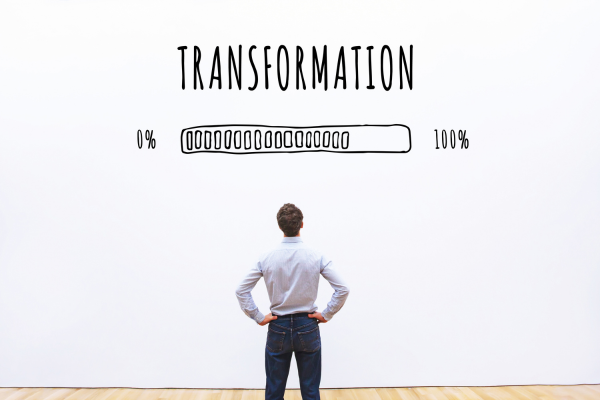Culture: It’s a term that's tossed around in boardrooms, casual conversations, and now, even in the banking industry. It's the underpinning of our behaviors, beliefs, and actions. But what does it truly mean? In a recent episode of the Banking on Digital Growth Podcast, host James Robert Lay and guest Dr. Marcus Collins dig deep into the enigma that is culture. Marcus Collins is an award-winning marketer and cultural translator, and the author of For the Culture: The Power Behind What We Buy, What We Do, and Who We Want to Be.
The top 3 insights from this article:
- Defining culture: What it is and common misconceptions
- Why community should be facilitated, not created
- Building trust in a digital world
The Role of Culture in Influencing Action
In the era of COVID-19, when physical connections dwindled, the essence of humanity shone the brightest. Marcus' book delves deep into understanding these underlying systems that shape our social world. Writing the book, he says, provided a medium to express depth of thought and reach a wide audience.
So what is culture, really?
Quoting Jay Z, "I do this for my culture," Marcus touches upon a recurring challenge: defining culture. He believes that if we cannot concretely describe culture, then it leaves us incapable of fully harnessing and operationalizing the power of culture.
"There's no external force more influential to human behavior than culture."
Marcus' interpretation of culture is a system of conventions and expectations that determine the identity of a group and their behaviors. This system, in turn, is influenced by shared beliefs, ideologies, artifacts, behaviors, language, and creations.
In simpler terms, culture dictates who we identify with and what we do in alignment with this identity. It shapes our worldviews and molds our actions. In a business context, like banking, understanding these cultural nuances can be transformative. It can guide how businesses communicate, market, and serve their customers.
James Robert correlates this discussion to his own book, Banking on Digital Growth. The definition of "digital growth", much like "culture", can be nebulous.
However, both concepts, when looked at as systematic processes, can have profound implications on industries, especially in the age of the modern consumer.
Understanding Culture as Integral to Business Success
Culture, in its many forms and definitions, often gets lost in the corporate jargon, missing the depth of its true significance. When companies and marketers talk about "embedding into culture" or "having a good culture," it must go beyond just the superficial.
As Marcus aptly pointed out, there's a prevalent misuse of the term 'multicultural,' particularly in the realm of marketing. It's common to associate 'multicultural' with racial or ethnic minorities. However, the essence of culture is far more intricate and diverse.
Culture is an merging of shared experiences, practices, and beliefs. It transcends race. For instance, a person's love for hip-hop or skateboarding isn't restricted by their racial background. Such interests or affiliations form micro-cultures that aren't limited by demographics but are instead dictated by one's personal identity and choices.
Related Content: What Community Means in the Digital Era
Traditionally, communities were defined by geographical boundaries - by states, cities, or even zip codes. However, in the Age of AI, communities are becoming more about shared interests, hobbies, and passions. It's about shared belief systems and common cultural subscriptions, whether they're around music genres, sports, or even niche occupations.
When banks and credit unions understand and cater to these nuanced communities, they tap into an unexplored reservoir of potential. It's not merely about serving a local community anymore. It's about understanding the myriad subcultures and creating value for them.
This is where niche banking or specific community-oriented services can come into play. Businesses that can resonate with the shared beliefs of these communities will naturally be preferred by them.
Related Content: Banking on Your Community in a Digital World
When individuals find a group or an entity that understands them, they feel a sense of belonging. This "they get me" feeling is essential for banks and credit unions aiming to foster trust and loyalty among their account holders.
Marcus' example of his mother, a dedicated teacher banking exclusively at a credit union, is testament to this. The credit union didn’t just cater to teachers as professionals; it understood them as a community with shared challenges and goals. The credit union aligned its services to reduce the friction in teachers' lives, resonating deeply with their unique needs.
But achieving this deep connection requires more than just market research or customer feedback. It's about empathy. In the digital age, where everyone is seemingly connected, genuine human connections seem to be dwindling.
The lyrics of Armin Van Buren's song – "everyone is connected, but no one is connected" – underscores this sentiment. The future of business lies not just in understanding the customer but in walking a mile in their shoes. It's about facilitating community, not just building one.
The Power of Facilitating, Not Building, Community
You don't build a community; you facilitate it. As businesses evolve, the understanding of community-building has transitioned from a manufacturing approach to a facilitative approach.
It's not about dictating terms but about listening, understanding, and then crafting services or products that cater to the unique needs of each community.
When financial brands take on the role of facilitators, they inherently become more empathetic, fostering stronger and more meaningful connections with their customers. And in an era where personalization is paramount, this approach can be the difference between success and obsolescence.
Related Content: Citizenship Leads to Ownership: Finding Community in a Networked World
Reflecting on his time managing the digital strategy for Beyoncé, Marcus sheds light on the illusion of easy digital community building with platforms like Facebook and Twitter. The expectation was to translate Beyoncé's immense offline popularity into a massive online community. But even with these powerful platforms, the initiative initially seemed like "a party no one showed up to."
However, the pivotal moment came when the team stumbled upon the Beehive, a pre-existing community of fans deeply connected not just to Beyoncé's music but to her worldviews, particularly on women's empowerment. They already had their unique language, artifacts, and behaviors. The strategic shift then pivoted from creating a new community to facilitating and empowering this already vibrant one.
Understanding Digital as an Extension of Humanity
Digital technologies, which process data as zeros and ones, are fundamentally extensions of humanity. These digital extensions are crucial as they bridge gaps and connect disparate elements. Businesses, especially in the financial sector, can harness these technologies to address pain points and frictions experienced by their customers. This not only optimizes the customer experience but also fosters organic brand promotion by satisfied customers.
One of the profound realizations that James Robert shares is that behind every data point and every binary digit is a person—a person with real emotions, pains, concerns, dreams, and aspirations. This observation is particularly pertinent to the financial services sector, where there's a pervasive yet under-acknowledged epidemic of financial stress and anxiety.
Related Content: Banking on Humanity Through Digital Communities
Financial institutions, especially community banks, have the opportunity to lean into this reality, facilitating narratives that address financial stress. It's about understanding and empathizing with people, understanding their stories, and providing solutions tailored to their unique needs.
If you don't understand people, you don't understand business. Every business process and strategy ultimately focuses on people. To get people to act—to buy, to vote, to engage—is the goal. And culture remains the most potent force that influences human behavior, regardless of context.
Whether one is in financial services, retail, or any other sector, understanding the underlying dynamics of human behavior is pivotal. This insight not only aids businesses in creating interventions that drive action but also does so predictably, given the predictability of culture's influence on human behavior.
Building Trust in a Digital World
When it comes to SVB and its rapid fall from grace, expedited by the wildfire of Twitter, the question posited is how did a virtual platform contribute to the bank's quick decline? Was it the digital nature of our age, or something deeper, rooted in human behavior and trust?
This leads to a point Marcus shared on LinkedIn, emphasizing that "people trust people over any other form of marketing". The underlying theme here is the concept of intimacy. How well do businesses know the people they serve? Is it just superficial demographic data, or do they understand the real person beyond the numbers?
Related Content: Data and Analytics: A Personalized Digital Experience Done Right
We live in an era where data on individuals is abundant. Businesses know more about consumers than ever before. But does having all this data translate to real understanding and intimacy?
Marcus asserts that there's a significant gap between acquiring data and extracting meaningful insight from it. We're mistaking raw information for intimacy, assuming that knowing someone's data means truly understanding them. Particularly in the financial sector, where services tend to be transactional, the challenge is to move beyond mere transactions and foster genuine relationships. The goal should be to use the available data to guide and help customers towards a brighter future.
The Role of Observation and Humor
When asked for practical advice, Marcus had an intriguing suggestion: "Act like a comedian". He explained that comedians excel at observing human behavior, identifying patterns, and communicating them in a relatable manner. They see people not just as consumers but as humans with unique cultural influences that shape their worldview.
For businesses, the takeaway is simple. Understand your consumers at a deeper level. Engage with them beyond mere transactions. By observing them closely and communicating in a way that resonates, businesses can foster trust and loyalty.
For more about financial transformation, reach out to James Robert Lay at the Digital Growth Institute.
This article was originally published on August 29, 2023. All content © 2024 by Digital Growth Institute and may not be reproduced by any means without permission.





